- 4 sensors included
- Alexa connectivity
- Peel and stick design
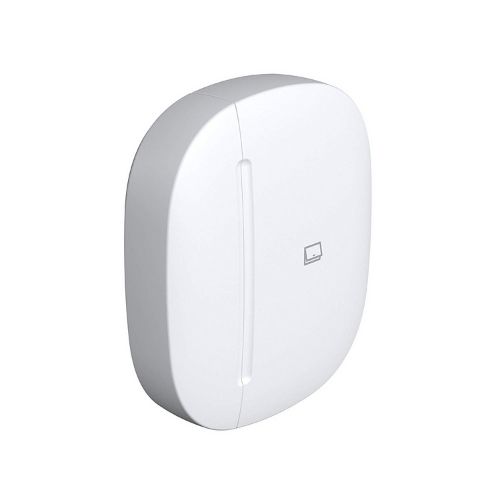 SmartThings Multipurpose Sensor
SmartThings Multipurpose Sensor
- Google Home and Alexa compatibility
- Motion, vibration, angle, temperature detection
- Google Home and Alexa compatibility
- Motion, vibration, angle, temperature detection
- 110dB siren
- IFTTT compatibility
The Wyze Choice
The door and window alarms from Wyze Sense come in a pack of four for under $20 from Wyze’s website. Other companies charge that much or more for one sensor alone. And we’d guess you have more than one door or window to protect.
Wyze’s sensors are compact and fit in door frames, window sills, and even on cookie jars (for those cookie thieves in your house). Whatever you want to keep closed, these devices make it easy and cheap to do.
If Wyze doesn’t hit the mark for you, we’ve got sensors that work with smart home systems, standalone sensors, and more in our list below. Take your pick from the best door window sensors.
Here Are the Best Door and Window Sensors of 2020
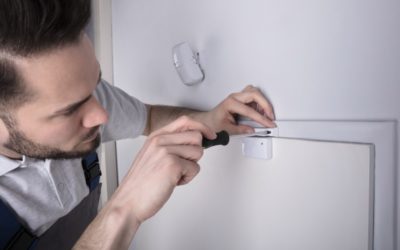
Best Window and Door Sensors Comparison
| Listed Price * |
| Number in Package |
| Adjustable Chime |
| Peel and Stick Design |
| Other Equipment Included |
| Connects To |
|
Best Overall
|
Most Versatile
|
Fewer False Alarms
|
Best Mobile App
|
Best Standalone
|
| Wyze Sense and Camera | SmartThings Multipurpose Sensor | iSmartAlarm Sensor | Geeni Smart Door and Window Sensors | SABRE Elite |
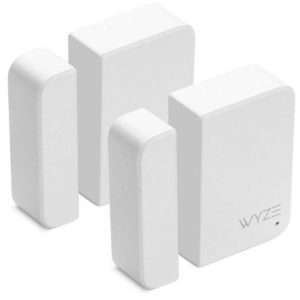 |
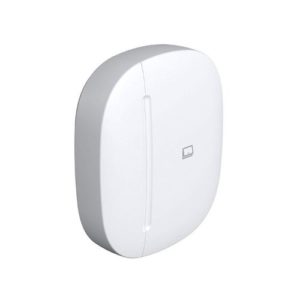 |
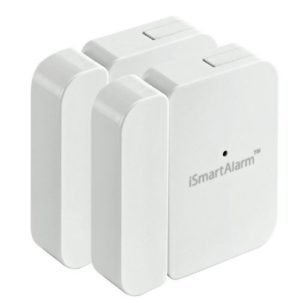 |
 |
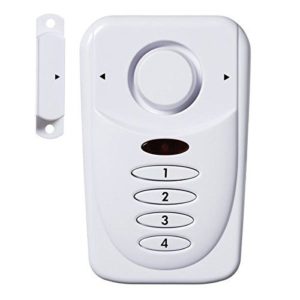 |
| $47.96 | $19.99 | $44.99 | $29.99 | $7.99 |
| 4 | 1 | 2 | 2 | 1 |
| No X |
No X |
Yes ✓ |
No X |
No X |
| Yes ✓ |
Yes ✓ |
Yes ✓ |
No X |
No X |
| Yes ✓ |
No X |
No X |
No X |
No X |
| Alexa | Alexa Google Home |
Alexa IFTTT |
None | None |
| View on Amazon | View on Amazon | View on Amazon | View on Amazon | View on Amazon |
Amazon.com List Price as of 10/09/20 1:23 p.m. MST. (Full disclaimer)
How We Picked the Best Door and Window Sensors
We wanted to feature contact sensors that don’t require monitoring or too many other components. So we started with Amazon reviews from verified customers to find the best candidates. From there, we looked at ease of installation, responsiveness, app navigation, and other factors that make the best door and window sensors.
Learn more about how we conduct reviews like this one in our full methodology.
Reviews: Door and Window Alarms
Wyze Sense and Cam: Best Overall
Nobody should leave their home unguarded because of their budget. The Wyze Sense Starter Kit lands around $20 on its own, but we recommend the Wyze Sense Starter Kit and Camera for $50 to create a complete home system at an affordable price point.
The Wyze contact sensors stick to door frames and windows, but they also fit unconventional spots like a keep safe box or a liquor cabinet. Your imagination is your only limit. And with the handy Wyze Cam, you can check in if a sensor alerts you that someone is where they shouldn’t be.
The sensors send a notification when their magnetic field breaks by opening the door or window. The Wyze app lets you name each device in your home so you’ll know which entrance opened instantly.
Read our full review of the Wyze Sense starter kit to take a deeper dive.
Pros
- Affordable bulk sensor price
- Camera included
- Alexa integration
- Small size that you can place anywhere
Cons
- No professional monitoring
SmartThings: Most Versatile
The SmartThings Multi-Purpose Sensor knows when your doors open or close like any other contact sensor. But this versatile device can also tell you when it senses vibrations, falls at an odd angle, or senses temperature out of the ordinary.
All of this means it’s more than a simple contact sensor or motion sensor. If someone tampers with it or it’s exposed to extreme temperatures (like those in a house fire), the SmartThings app would let you know immediately.
The SmartThings sensors connect through your home’s wireless network to the SmartThings Hub.Folks with larger homes may need a range extender to boost the signal between devices. These window and door sensors need to be within 30 to 50 feet to communicate with the hub, so choose the most vulnerable areas in your home and cover those first.
The final cost of contact sensors comes down to how many sensors you want in one purchase and what you want them to detect. If you want a sensor that detects more than just an open door or window, the SmartThings is the smart choice for an affordable price. But opting for super smart sensors will mean you end up paying more for each piece of equipment than for our top pick Wyze.
Pros
- Smart features and connectivity
- Long battery life
- Multifunctional sensor
Cons
- Short range
- Requires SmartThings hub
iSmartAlarm Sensor: Fewer False Alarms
iSmartAlarm door and window sensor uses wireless communication to “speak” to other smart devices in your house so you’ll get fewer false alarms. It can reach other devices up to 320 feet away and sends a text when it detects unauthorized use.
This sensor is easy to install and move around the house too. Use double-sided tape to stick this alarm to your windows, door frames, cabinets, and other entryways. So as the baby gains mobility or an area goes off-limits, you’ll know when someone’s entering an area they shouldn’t.
The iSmartAlarm contact sensor is compatible with a suite of other motion sensors, indoor security cameras, and the whole iSmartAlarm system. This standalone system doesn’t require contracts or monthly monitoring, making it easy to self monitor your home from anywhere.
And while the price may throw you off initially, it comes in packs of two, making it around the same price as the SmartThings sensor.
Pros
- Easy installation
- Compatibility with other iSmartAlarm devices
- Wireless communication
Cons
- Not tamper-proof
- Short wireless connection
Geeni Smart Door and Window Sensors: Best Mobile App
Like Wyze, SmartThings, and iSmartAlarm, the Geenie Smart Door and Window Sensors connect to your Wi-Fi and send you alerts through an app. They don’t require a hub to activate, making them a good option for standalone security. If you have a teen who sneaks out at night or kids who come home early from school, these sensors can tell you when the front doors open and close.
The Geenie contact sensor is smart, but not smart enough to connect with Alexa, Google Assistant, or Apple Home Kit. So when you install one in your home with the included adhesives or screws, it truly does stand alone, so it’s better for solving specific problems than boosting home security or automation.
Pros
- No hub required
- Wireless communication
- Installation materials included
Cons
- Pricey for limited capabilities
- Incompatible with Alexa, Google Assistant, and Apple Home Kit
SABRE Elite: Best Standalone
The SABRE Elite door and window sensors trade smart features for budget-friendly practicality. These contact sensors don’t come with an app or wireless abilities like the others in our lineup, but they do have some unique features.
This SABRE contact sensor has a programmable four-digit panel that prevents intruders from disabling or turning them off. The blaring alarm reaches 120 dB, which is about as loud as a police siren. But if you want something easier on the ears, you can change the alarm to silent mode or chirps.
We recommend using it for off-limits or private areas like sheds and storage units, or in areas that could be dangerous or you want to keep private. So while you’ll miss out on app notifications, it won’t be hard to hear if the alarm sounds.
Pros
- Affordable price
- Loud adjustable alarm
- Simple design
Cons
- No app included
- No wireless abilities
Top 3 Door and Window Sensors With Security Packages
The following sensors are accessories to larger home security systems and require you to purchase monthly monitoring. Comprehensive security offers more protection, but it does come with a steeper price tag.
| Pros |
| Cons |
| Review |
| Price |
 |
 |
 |
| Long battery life | Supports 30+ sensors | Choose your own equipment |
| Temperature limits | Not tamper-proof | Needs monitoring |
| Read Review | Read Review | Read Review |
| View Packages | View Packages | View Packages |
Vivint Door/Window Sensor
Vivint is known for its innovative approach to home automation and technology, and its door and window sensors are no exception.
You’d have to purchase these contact sensors along with the rest of a Vivint system. But installation is done by pros and the sensors recess into your door or window frame. These recessed sensors are unique from our top DIY choices that stick to windows and door frames. Plus, these sensors come with a cover and anchor screws to keep intruders from disarming the device, making them discrete, permanent, and tamper-proof.
Vivint’s door and window alarms wirelessly stay in contact with your main security panel from 350 feet away. If the device senses someone tampering with your doors, windows, or cabinets, it sends an alert to the security panel.
Learn more about the entire Vivint system by reading our full review.
Frontpoint Door/Window Sensor
The Frontpoint door and window sensors are made for windows and doors, as well as gun, liquor, and medicine cabinets. After all, sometimes you need to protect your loved ones from threats already inside the home. These sensors are under an inch wide and two inches high, making them easy to place in less obvious places around the house.
Unfortunately, they aren’t tamper-proof like Vivint’s contact sensors. They use a peel-off adhesive that could be easy for intruders to remove. It’d be nice to see an optional mounting bracket available to make tampering harder.
Our Frontpoint review will give you more information on this sensor and the rest of the system.
Link Interactive Door/Window Sensor
Link Interactive offers a few different types of door and window sensors. They have recessed sensors that slip into window frames and door jambs, standard window and door sensors, or devices meant to detect tilting (perfect for garages).
Link Interactive’s products are DIY, making their home security systems more customizable without giving up professional monitoring.
Having the pros on your side is helpful in an emergencies like break-ins, but it raises the price significantly (especially if you just want a contact sensor).
Our Link Interactive review has more details.
Before You Buy Door/Window Sensors
Smart Features and Automation
If you like to stay connected to your home while you’re away, consider door and window sensors with mobile apps and alerts. Most of the sensors we chose in our lineup connect to your home’s Wi-Fi and can send updates directly to your phone.
Your smart assistant (Alexa, Apple HomeKit, Google Assistant) can connect to home devices like door sensors. You can include one that plays well with others in automations like turning off the lights when a door closes or triggering a camera when the door opens.
Location and Fit
Where you install your sensors changes the way they function. Window and door frames are the most common places for contact sensors, but they also fit on medicine cabinets, drawers, safes, the refrigerator, or anything that opens and closes.
The type of door frame you have may also affect the sensors. Doors with raised molding around them may put the sensors out of range of each other and create false alarms. Wherever you install your door and window sensors, be sure each piece aligns comfortably before finishing your installation.
Alerts and Notifications
If a door opens and nobody’s home to answer, does it make a sound? It does if you have mobile alerts or notifications through your contact sensor. These devices aren’t locks, so they’re best paired with devices like smart locks.
Contact sensors are helpful for knowing when a door opens or closes whether you’re home or not. Some contact sensors let you set chimes and sounds that trigger when the sensor goes off. Others send you push notifications to your phone when they activate.
Door/Window Sensors FAQ
Do I need entry sensors on every window?
The more door and window sensors in your home, the more control you have. At minimum, we recommend placing a door and window sensors on all the main entrances (front, back, patio doors, etc.) and large ground floor windows.
How do door and window sensors work?
Most door and window sensors use magnets to create a field when closed. Once that field breaks, the sensor triggers and sends you an alert or sounds an alarm.
Incorrectly installing your contact sensors can interfere with this field and cause false alarms. So make sure both pieces of the sensor are level and within range of each other when you install them.
Curious about how other motion sensors work? Our Beginner’s Guide to Motion Sensors outlines the basics for you.
How do you test a door sensor?
For sensors that use an app, you can check it on your phone. Others may have an additional test button you can press to test the alarm or chirp of the sensor. It’s smart to test your sensors in person before trusting them with your home alone.
If the sensor doesn’t work, check the batteries or the magnetic pieces to make sure they’re aligned.
What are some other brands of door and window sensors?
Some of the most popular brands of door and window sensors have contact sensors included in their packages. Companies like Ring, Nest, Frontpoint all have smart contact sensors, but they tend to work better in tandem with a full system.
Disclaimer
Amazon.com list price as of 10/09/20 1:23 p.m. MST. Product prices and availability are accurate as of the date/time indicated and are subject to change. Any price and availability information displayed on Amazon at the time of purchase will apply to the purchase of this product. Safewise.com utilizes paid Amazon links.
Certain content that appears on this site comes from Amazon. This content is provided “as is” and is subject to change or removal at any time.
The post Best Door & Window Sensors appeared first on SafeWise.
from Blog – SafeWise https://ift.tt/35CTPIq
via IFTTT
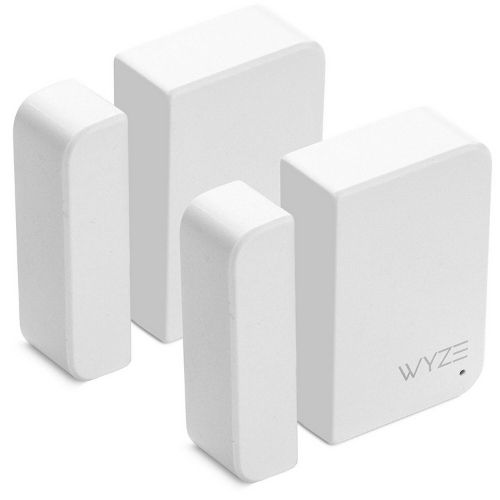
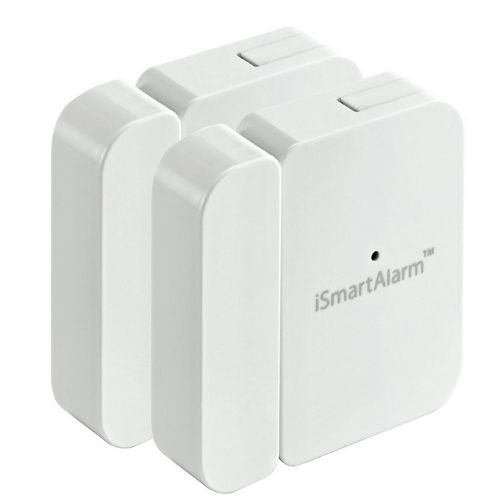
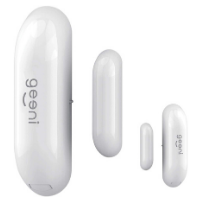

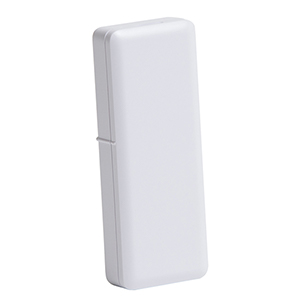
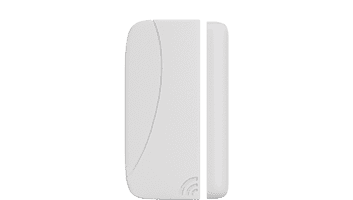
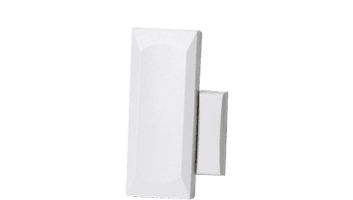
No comments:
Post a Comment